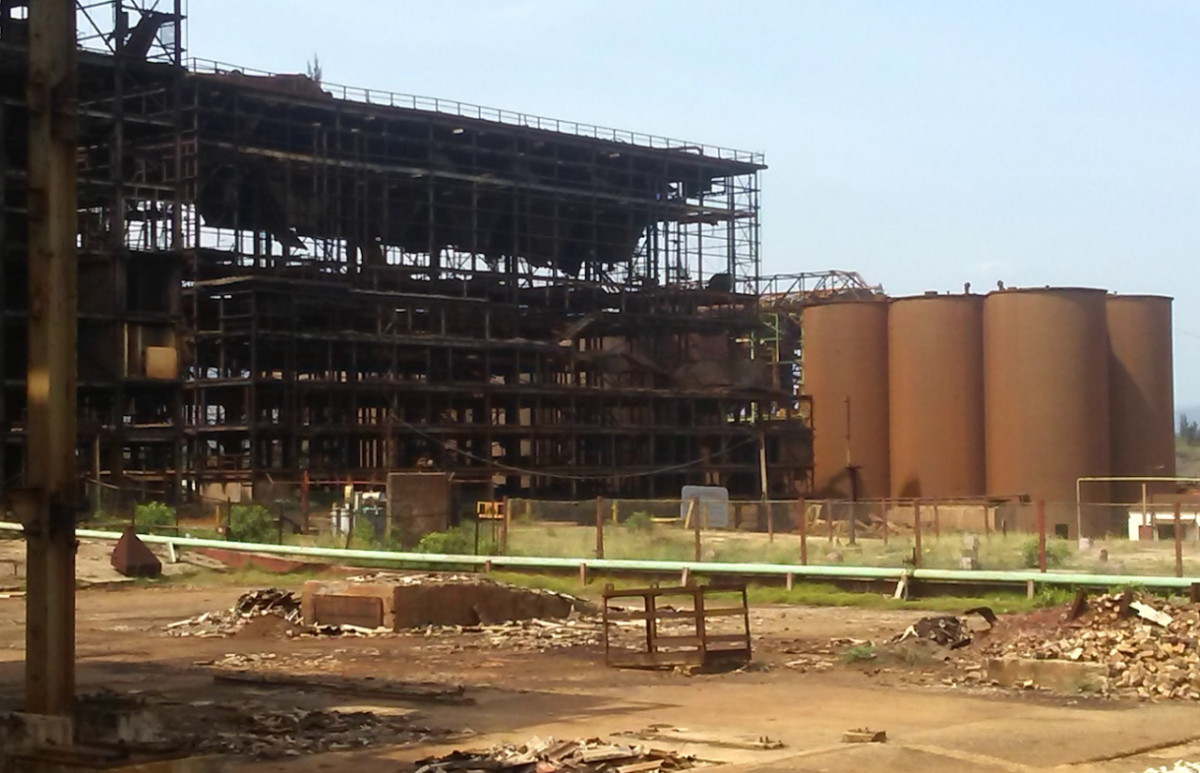In 2013 Raúl Castro's government decided to dismantle the nickel industry in Mayarí. The René Ramos Latour factory, in Nicaro, the largest producer of the metal, was scrapped and transformed into a center of technological "cannibalism". Other companies still go there to find anything that might serve as a replacement part.
Technological obsolescence was cited first when the plant was closed, despite the fact that there were numerous investments, with the help of the extinct socialist bloc, and, later, Canada. Less than five years prior work had concluded on the construction of a modern 11-km ore transporter, featuring German technology, to lower the ore to the lowland from the Pinares de Mayarí mountains.
Everything indicates that the authorities planned to destroy the transporter along with the rest of the industry, but apparently they had second thoughts. Among area residents this fans hopes that another factory will be rebuilt, and the idea that the decision to destroy Nicaro was a mistake.
"What people at the company say, even the bosses, and the workers, is that it was clearly a mistake to close Nicaro. It was a decision handed down from above. Technological problems certainly existed, but this was due to mismanaged investments. In short, bad work by those in charge," said José, a former technician at the factory.
"In the end, the plans were realized, and the efficiency indicators were satisfactory. It is true that they often sagged, but then we bounced back when things were going better, as otherwise we didn't receive our bonuses," he explained.
"The deficiencies could have been fixed through good investments, for far less than it costs now to build a whole factory, as they apparently want to do."
With respect to the ore transporter, one of its custodians, previously a worker, confirmed that "first, the idea was to dismantle it."
"That would have been a crime, because it was not operated very much, and it cost a lot. It represented a colossal effort. In the end they decided to spare it, and now we are waiting for foreign investment in a new factory. That's what they’re tell us," he said.
The Mayarí pine forests and Sierra Cristal mountain range contain nickel and cobalt deposits considered among the largest in the world, which, together with those at Moa, would take thousands of years to deplete, event if current production quadrupled.
The area contains some 12% of the world's verified nickel reserves, and 25% of those of cobalt. And, the laterite mineral that contains them is also rich in iron, chromium and other metals, including gold.
Before closing Nicaro, the country produced more than 70,000 tons of nickel and cobalt, with plans calling for 120,000. Today the goal is to reach sustain 50,000 tons.
The Government is promoting the industry in its "portfolio of opportunities" for foreign investors, which includes the promotion of new processing plants – which is paradoxical, after it destroyed the country's most productive factory, 100% Cuban, without compensation being paid to those who were its owners before the triumph of the Revolution.
In spite of all this, Cuba continues to be one of the largest producers of nickel and cobalt internationally, as these are minerals located in very few places on the planet.
Russia, Canada and Australia share primacy with Cuba, and other countries, such as France and Bolivia, are major producers. China is the main buyer, consuming about 20% of the world's production.
